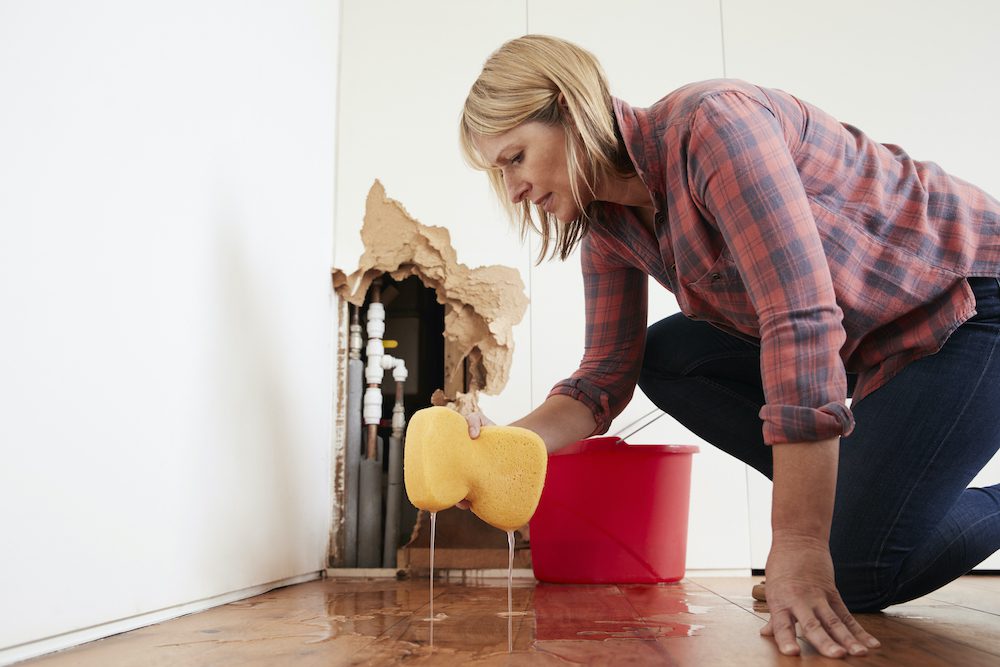How to Check If Your Residence Has a Concealed Leak
How to Check If Your Residence Has a Concealed Leak
Blog Article
This great article below relating to Leaking water lines is totally intriguing. Don't bypass it.

The moment you locate a leak, calling your plumber for repair work is the most effective service. Some little water leakages might not be noticeable. Here are some hacks that aid if you can not find it with your nude eyes.
Early detection of leaking water lines can mitigate a potential catastrophe. Apart from conserving you cash, it will reduce the worry and also stress.
Inspect Water Consumption
If you identify sudden modifications, despite your usage being the very same, it suggests that you have leaks in your plumbing system. An unexpected spike in your costs indicates a fast-moving leak.
A stable boost every month, also with the very same behaviors, reveals you have a sluggish leak that's likewise slowly escalating. Call a plumber to thoroughly inspect your home, specifically if you really feel a cozy location on your floor with piping underneath.
Evaluate the situation and inspect
Property owners ought to make it a practice to examine under the sink counters as well as also inside cupboards for any kind of bad odor or mold and mildew growth. These two warnings show a leakage so prompt interest is needed. Doing routine assessments, even bi-annually, can save you from a significant trouble.
Examine the Water Meter
Every residence has a water meter. Checking it is a guaranteed manner in which assists you find leaks. For starters, turn off all the water resources. Ensure no one will flush, make use of the tap, shower, run the cleaning device or dishwashing machine. From there, most likely to the meter and also watch if it will certainly alter. Because no person is utilizing it, there need to be no motions. If it relocates, that suggests a fast-moving leak. Furthermore, if you discover no changes, wait a hr or two and also inspect back once more. This means you might have a slow leak that might even be below ground.
Asses Outside Lines
Don't fail to remember to examine your outside water lines also. Ought to water permeate out of the connection, you have a loose rubber gasket. One little leak can lose tons of water as well as spike your water expense.
Do a Food Coloring Examination
When it comes to water usage, 30% comes from toilets. If the color somehow infiltrates your bowl throughout that time without flushing, there's a leakage between the tank as well as dish.
Examine for stainings and compromising as the majority of appliances as well as pipes have a life expectancy. If you believe leaking water lines in your plumbing system, do not wait for it to escalate.
The moment you discover a leakage, calling your plumber for fixings is the best remedy. Some small water leaks may not be visible. Inspecting it is a proven way that helps you uncover leakages. One tiny leak can throw away lots of water and spike your water bill.
If you think leaking water lines in your plumbing system, don't wait for it to rise.
WARNING SIGNS OF WATER LEAKAGE BEHIND THE WALL
PERSISTENT MUSTY ODORS
As water slowly drips from a leaky pipe inside the wall, flooring and sheetrock stay damp and develop an odor similar to wet cardboard. It generates a musty smell that can help you find hidden leaks.
MOLD IN UNUSUAL AREAS
Mold usually grows in wet areas like kitchens, baths and laundry rooms. If you spot the stuff on walls or baseboards in other rooms of the house, it’s a good indicator of undetected water leaks.
STAINS THAT GROW
When mold thrives around a leaky pipe, it sometimes takes hold on the inside surface of the affected wall. A growing stain on otherwise clean sheetrock is often your sign of a hidden plumbing problem.
PEELING OR BUBBLING WALLPAPER / PAINT
This clue is easy to miss in rooms that don’t get much use. When you see wallpaper separating along seams or paint bubbling or flaking off the wall, blame sheetrock that stays wet because of an undetected leak.
BUCKLED CEILINGS AND STAINED FLOORS
If ceilings or floors in bathrooms, kitchens or laundry areas develop structural problems, don’t rule out constant damp inside the walls. Wet sheetrock can affect adjacent framing, flooring and ceilings.
https://www.servicemasterbyzaba.com/blog/how-to-detect-water-leakage-in-walls/

I'm certainly very occupied with Detecting hidden plumbing leaks and I hope you liked the blog post. If you enjoyed reading our post kindly be sure to pass it around. I appreciate reading our article about Top leak detection hacks.
Report this page